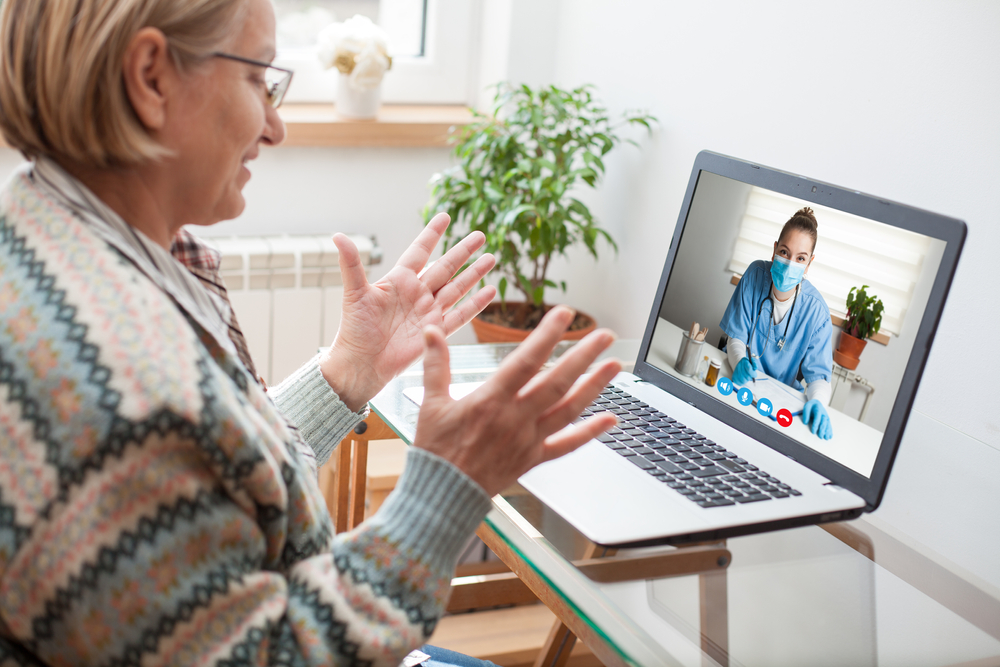
Telemedicine and Digital Health
During the epidemic, telemedicine has received a lot of attention. With stay-at-home orders keeping much of the world’s population at home, technology that facilitates remote communication with physicians and allows for patient monitoring has become even more important. U.S. healthcare providers have reported a 175-fold increase in telemedicine admissions (i.e., the number of appointments where a patient communicates with a physician via voice or video chat) since the outbreak began. Furthermore, the pressure the pandemic has placed on the global healthcare system has revealed a wide range of opportunities to modernize healthcare through the more effective use of technology and digitization.
“Expand health coverage. “
Half of the world’s population lacks basic medical services. Part of this is due to remote locations, distance from resources or healthcare professionals. Telemedicine helps extend essential medical services to these people.
In rural America, where 120 hospitals have closed since 2010, telemedicine is gaining in popularity and showing early success. According to a recent survey by National Public Radio (NPR), 24% of rural adults said they had used telemedicine and 90% said they were satisfied. To benefit both the individual and the healthcare system, the use of rural telemedicine can limit the number of patients referred from rural areas to emergency services in more developed areas. However, the lack of broadband network in rural areas is one of the constraints, but the US Federal Communications Commission (FCC) committed $200 million in July 2020 to improve rural telemedicine infrastructure, which has a positive effect on service. popularization of high-speed networks and 5G technology.
Similar opportunities exist for telemedicine technology in remote areas of the world. In sub-Saharan Africa, where skin conditions are common but dermatologists are scarce, researchers have established a teledermatology service initiative. With their efforts, 49% of patients with inflammatory skin disease were diagnosed and 81% of local healthcare professionals responded positively. MSF implemented a similar telemedicine program in Somalia, where 56% of consultations over a year of teleconsultation increased critical diagnoses and 25% had fatal conditions. As of now, global internet usage has continued to increase despite the lack of network infrastructure to deploy the technology on a large scale in many remote areas.
Economic conditions are also one of the reasons why people drop out of treatment. In Organization for Economic Co-operation and Development (OECD) countries, 17% of adults say financial concerns are driving their unmet medical needs, and telehealth can help reduce those costs. In the United States, health plan operator Anthem reduced the total payment for telehealth consultations to $5, compared to $25-35 for in-person primary care consultations, showing a huge disparity. The immediate value of a single consultation is obvious, but the combined cost savings of follow-up can result in cost savings that positively impact the indifference curve of patients seeking medical care.
Overall, the American Veterans Medical Association estimates annual savings of $6,500 per patient who participates in telehealth. You can save even more by adding travel costs. Between 1996 and 2013, the UC Davis Health System found that telehealth saved patients $2.9 million in direct travel costs and nine years of travel time. While parity means lower cost per service usage for providers, the benefits of overall cost savings, convenience, and demand fulfillment drive telemedicine use more than enough to offset any lost revenue.
Smart treatment, better effect
Digital health tools are revolutionizing the way healthcare is delivered and providing new solutions to improve medical outcomes in all areas. Adherence to treatment, a patient's ability to follow a doctor's orders and treatment, is one area.
Medication adherence is often a major barrier to providing effective treatment – less than 50% of patients fully follow a healthcare provider's targeted protocol. Studies show that non-adherence to treatment causes approximately 125,000 deaths each year, corresponding to 25% of hospitalizations in the United States. Telemedicine, which facilitates communication between physicians and patients and reduces costs, can be an effective solution, especially for chronic diseases that require continuous monitoring.
For example, patients with chronic heart failure (CHF) require dynamic risk identification and timely intervention to manage their physical condition. In an analysis of congestive heart failure studies, researchers found that patients who used telemedicine had a 15% to 56% reduction in mortality compared to patients who did not use telemedicine (18 of 19 studies). Another study looked at the effect of telemedicine on improving medication adherence in patients with severe mental illness. The results showed that, after six months, the population of patients using telemedicine was more likely to adhere to the medication.
Internet of Things (IoT) medical devices, connected wearables, and self-reporting mobile health apps are further bringing the physical distance between healthcare professionals and patients, enabling monitoring outside of traditional medical institutions. In 2017, the US Food and Drug Administration (FDA) approved an edible pill with a built-in sensor for treating schizophrenia, mania, bipolar disorder and depression in adults. The pills are synchronized with the wearable patch, which communicates with the smartphone and generates information about the medication taken, which is useful for both patients and healthcare professionals.
In addition to compliance monitoring, this technology allows clinicians to monitor a patient’s condition and obtain vital information remotely. Remote Intensive Care Units (eICUs) are equipped with a large number of networked devices, including cameras, ventilators and monitoring systems that track vital signs such as body temperature, oxygen saturation, electrocardiogram, heart rate, blood pressure and more. . Data show that these centers can reduce patient mortality by 15-60% and reduce the average length of hospital stay by an average of 30%.
On a smaller scale, self-managing connected medical devices can provide clinicians with similar information while also giving patients control over their self-care, especially important for the treatment of lifelong chronic conditions such as type 1 diabetes. Historically, this condition required careful monitoring of blood glucose levels and management of insulin medication. But now IoT-powered devices such as continuous glucose monitors (CGMs) and insulin pumps greatly simplify the process and can automatically check blood sugar levels, dispense predicted doses of medication, and organize health-related data in an accessible way. .
Combining the data collected by the above devices, healthcare apps, etc., with genomic information and data from the broader medical system, can play a role in disease prevention. Artificial intelligence (AI) can use this data to find established patterns for accurate treatment and intelligent diagnosis. As of January 2020, the FDA has approved more than 60 different AI algorithms for medical use, primarily algorithms for analyzing medical exams and images, including those for analyzing characteristics of thyroid nodules, detecting liver and lung lesions, and detecting breast cancer. accuracy is on par with radiologists.
To complete
Telemedicine and digital health can shorten geographic distances, reduce economic burdens and enable healthcare to benefit more people, providing opportunities for mass adoption. Technology has the opportunity to revolutionize treatment options, improve patient outcomes and simplify the healthcare system.
We believe that companies that provide services to connect doctors and patients in digital media, as well as companies that develop connected health devices, working in the area of health analytics and/or managing digitalization, will benefit.
Related
You May Also Like
After extensive debate, CFM regulates the practice of Telemedicine in Brazil
The Federal Council of Medicine (CFM) released this Thursday (4) Resolution No. 2,314/2022 (ACCESS H



Leave a Reply